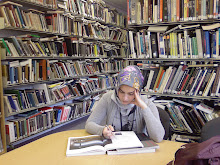Thomas Holloway, renowned British engraver, is among the first to devise a mechanism to draw profiles with a shadow. Contemporary with Hawkins and Chretien, Holloway publishes the following image in 1792:

Strangely, this “machine” is not particularly mechanical. It removes pantographic arms in favor for a simple translucent screen to catch a subject’s shadow. The artist would then only need to trace the shadow with a pencil (however difficult this may have been considering the light source was a flickering candle). Its mechanism is a refinement on the pantograph because it uses existing projectors nature provides. The light emits the invisible lines that pass a solid’s edge and leave that mark on the screen as the shadow’s edge.
A 20th century version uses some mechanism for alignment, but is virtually unchanged from Holloway’s model:

Taken together, there was a clear alignment of interests in the late 18th, early 19th centuries that brought projection systems to the foreground. A burgeoning Neoclassicism looks to ancient stories, finding a tale of the origin of painting. Physiognomy arrives on the scene, also inspired by ancient philosophy. The sudden loss of interest in the method occurs around 1840, immediately in the wake of the invention of photography. The chemical processes used by Daguerre and Niepce in France, and by Henry Fox Talbot in England, were almost simultaneously and independently achieved. The fact that several people can claim the invention of photography is probably an indicator that the interest in mechanical imagery was waning and that true fidelity, in the form of light captured on paper, was willed into existence.

No comments:
Post a Comment